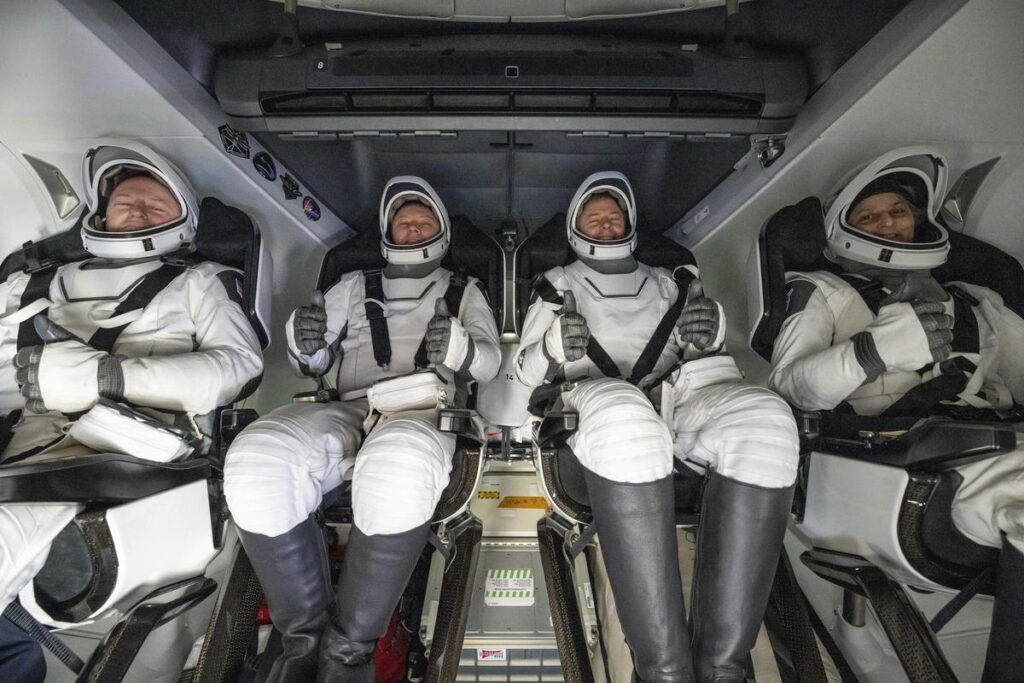
A Mission That Began as a Test Flight Becomes a Historic Journey
NASA astronauts Butch Wilmore and Sunita Williams returned to Earth on March 18, 2025, after spending over nine months in space. Their mission, which began as a troubled test flight, concluded with an alternate return trip, ending a prolonged and challenging journey in space.
Astronauts Wilmore and Williams initially planned for a short mission after launching on Boeing’s Starliner capsule on June 5. However, multiple technical issues forced NASA to send Starliner back empty and transfer the astronauts to SpaceX, delaying their return to February. Further complications with the SpaceX capsule extended their mission by another month. Ultimately, their unexpected, months-long space journey ended when they successfully splashed down in the Gulf of Mexico on March 18, 2025.
NASA astronauts Butch Wilmore and Sunita Williams were finally able to return to Earth after their relief crew arrived on Sunday. Initially scheduled for a brief mission, their return was delayed due to multiple technical issues with Boeing’s Starliner and later with SpaceX’s capsule. NASA opted for an earlier departure to avoid worsening weather conditions. Wilmore and Williams checked out alongside NASA’s Nick Hague and Russia’s Alexander Gorbunov, who had arrived last fall on a SpaceX capsule with reserved seats for them. By the time of their March 18, 2025, splashdown in the Gulf of Mexico, they had spent an unexpected 286 days in space, orbiting Earth 4,576 times and covering 121 million miles (195 million kilometers).
“On behalf of SpaceX, welcome home,” radioed SpaceX Mission Control in California.
Read Also: How the rise of reusable rockets is playing a crucial role in renewable energy
Human Endurance, Space Technology, and the Power of Electricity
NASA astronauts Butch Wilmore and Sunita Williams finally returned to Earth after their prolonged 286-day mission, originally planned for just a week. As their SpaceX capsule splashed down, dolphins circled while recovery crews prepared to bring them aboard. Their ordeal captured global attention, making “Butch and Suni” household names. Despite the uncertainty, they fully integrated into the space station crew, conducting experiments, making repairs, and completing spacewalks—Williams even set a record for most spacewalking hours by a female astronaut. Williams also served as station commander for several months.
Their prolonged stay highlighted the importance of electric energy in space, as they relied on advanced solar panels and battery systems to sustain power for experiments and station maintenance. Their journey also underscored the challenges of long-term space missions and the necessity of reliable electric energy sources for future exploration. Political tensions arose when President Trump urged SpaceX to accelerate their return, blaming the Biden administration. A used SpaceX capsule was ultimately deployed to speed up the process. Despite the political drama, Wilmore and Williams remained professional, supporting NASA’s decisions and maintaining a positive public presence throughout their unexpected, history-making journey.
Wilmore and Williams’ prolonged mission tested their resilience, adaptability, and professionalism. Despite unexpected delays and political tensions, they remained committed to their duties, contributing significantly to space research. Their historic journey not only showcased human endurance in space but also reinforced global interest in space exploration, technological advancements, and the crucial role of electric energy in sustaining life beyond Earth.
- Check the story of reusable rockets in a few seconds: Reusable Rockets story

You actually reported it fantastically.
homepage
Thanks. I value it!
casino en ligne
Thanks! Very good information!
casino en ligne
Helpful stuff, Many thanks.
casino en ligne
Wonderful postings, Thanks!
casino en ligne
Whoa tons of beneficial data!
casino en ligne
Thank you! I appreciate this.
casino en ligne
Incredible a lot of amazing material!
casino en ligne
Wow a lot of fantastic tips!
casino en ligne
Really loads of excellent knowledge.
casino en ligne